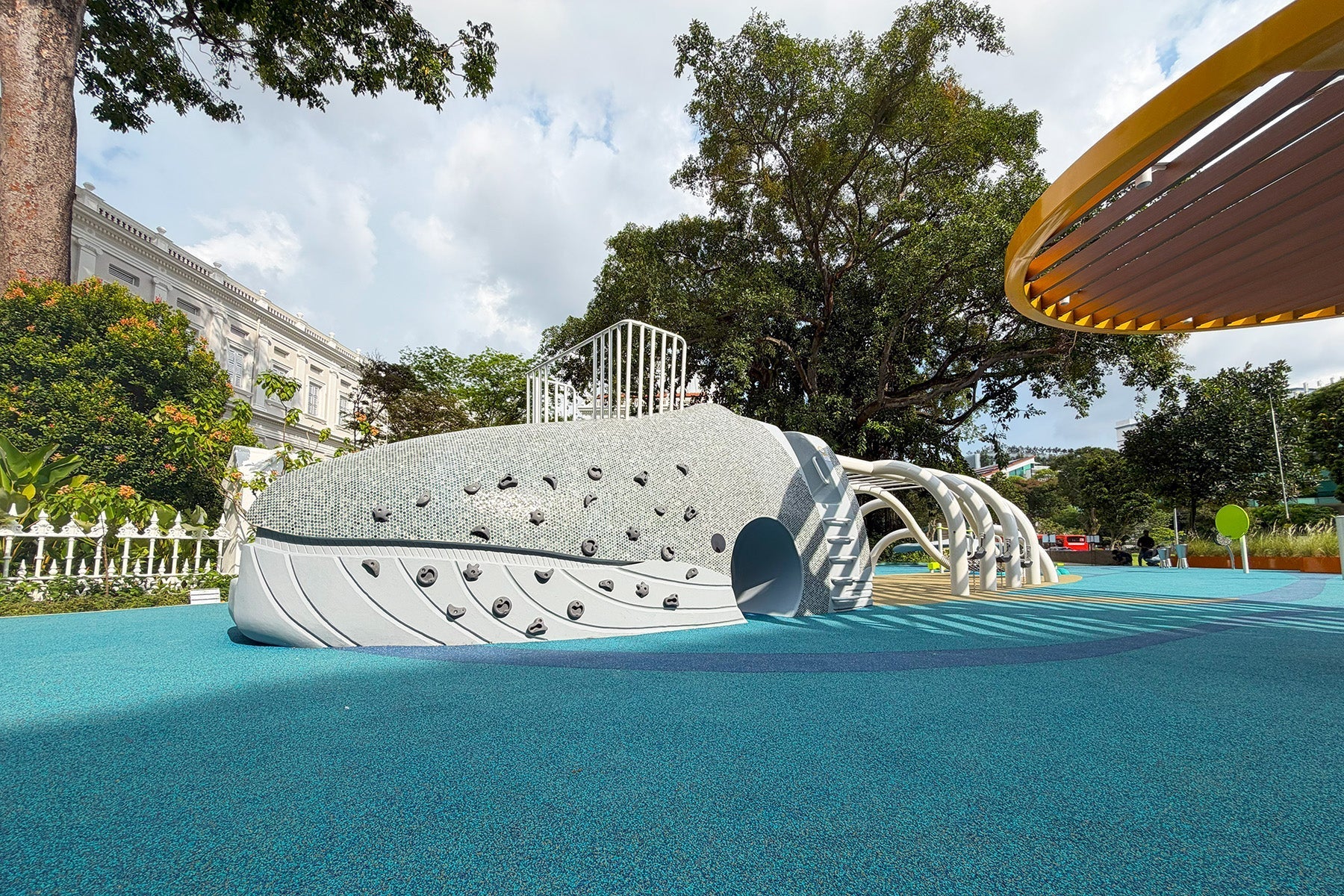
- by Sarah Lee
National Museum of Singapore: A Whale of a Tale
- by Sarah Lee
The National Museum of Singapore has always been a place where stories of the island are kept, examined and celebrated. For its 138th anniversary, we collaborated with SPACELogic to turn one such story into something children could touch, climb and play through: A Whale of a Tale, a customised Magical Bridge Design playground inspired by the iconic blue whale skeleton once displayed at the museum. The result is a playful, sculptural landscape that honours museum history while inviting intergenerational play across the museum grounds.
Transforming an artefact into a playground required more than a literal copy. We explored how the whale’s dramatic silhouette, its ribs and cavernous mouth, might become places of discovery and movement without losing the gentle dignity of the original specimen. The Magical Bridge Design approach focuses on inclusivity, sensory engagement and creative play. After countless iterations, we reached a design that balanced evocative form with practical safety, material longevity, and accessibility. The result is a piece that reads as public art from afar, yet transforms into a rich play environment up close. To mark the launch, the museum grounds were transformed for a day into a carnival of play and learning, bringing families, school groups and museum visitors together to celebrate both the institution’s history and the power of play.

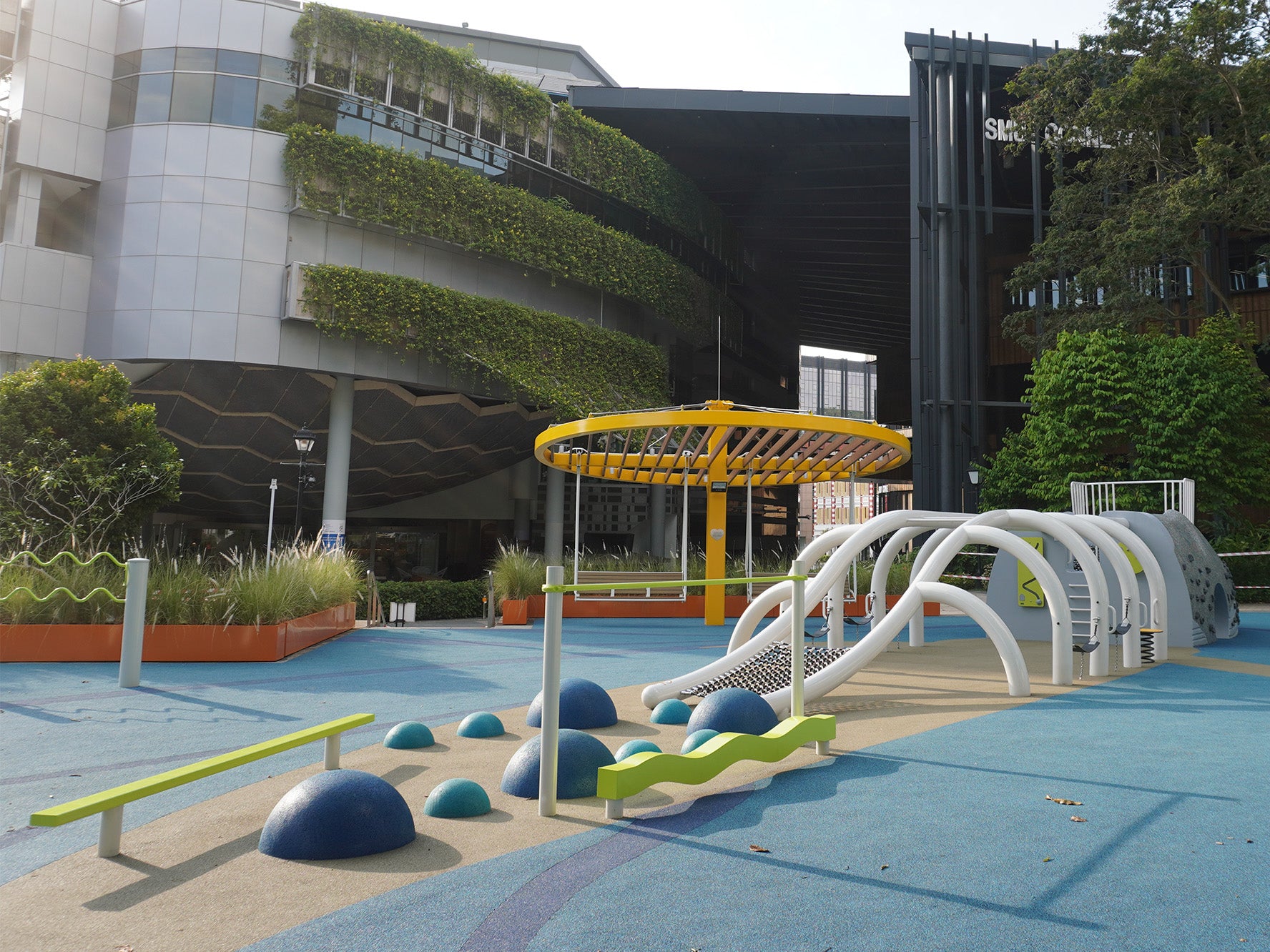
At the heart of the installation sits the Whale Structure, engineered in glass fibre reinforced concrete (GFRC) to capture fine sculptural detail while meeting the structural and durability demands of an outdoor, heavily used playground. The head and tail are finished with mosaic tiles that catch the light and reference the marine environment; climbing grips are placed around the whale’s head to mimic barnacles and provide tactile interest for small hands.

Head
Children can tunnel through the underside of the head; older children can ascend a ladder or negotiate a cargo net at the blowhole area, then descend through the mouth via an enclosed slide. On the rear of the head, we integrated Galopin play panels and a steering wheel—small, focused play elements that invite role-play and cooperative interaction.
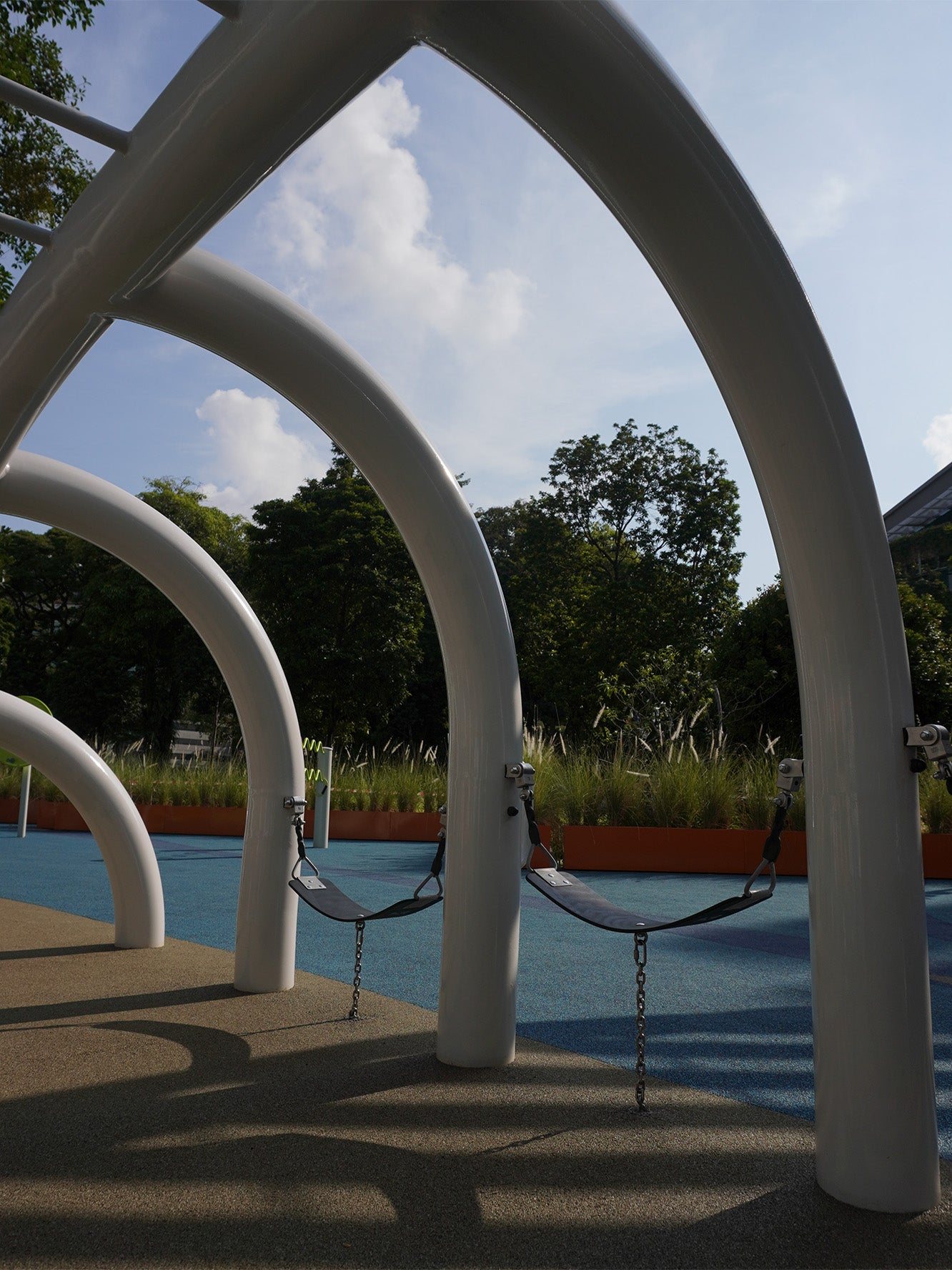
Body
The body is expressed as a skeletal framework where rhythm and repetition create movement opportunities. Suspended swing seats, a spring seat and an expansive cargo net invite group play, balance and coordination.
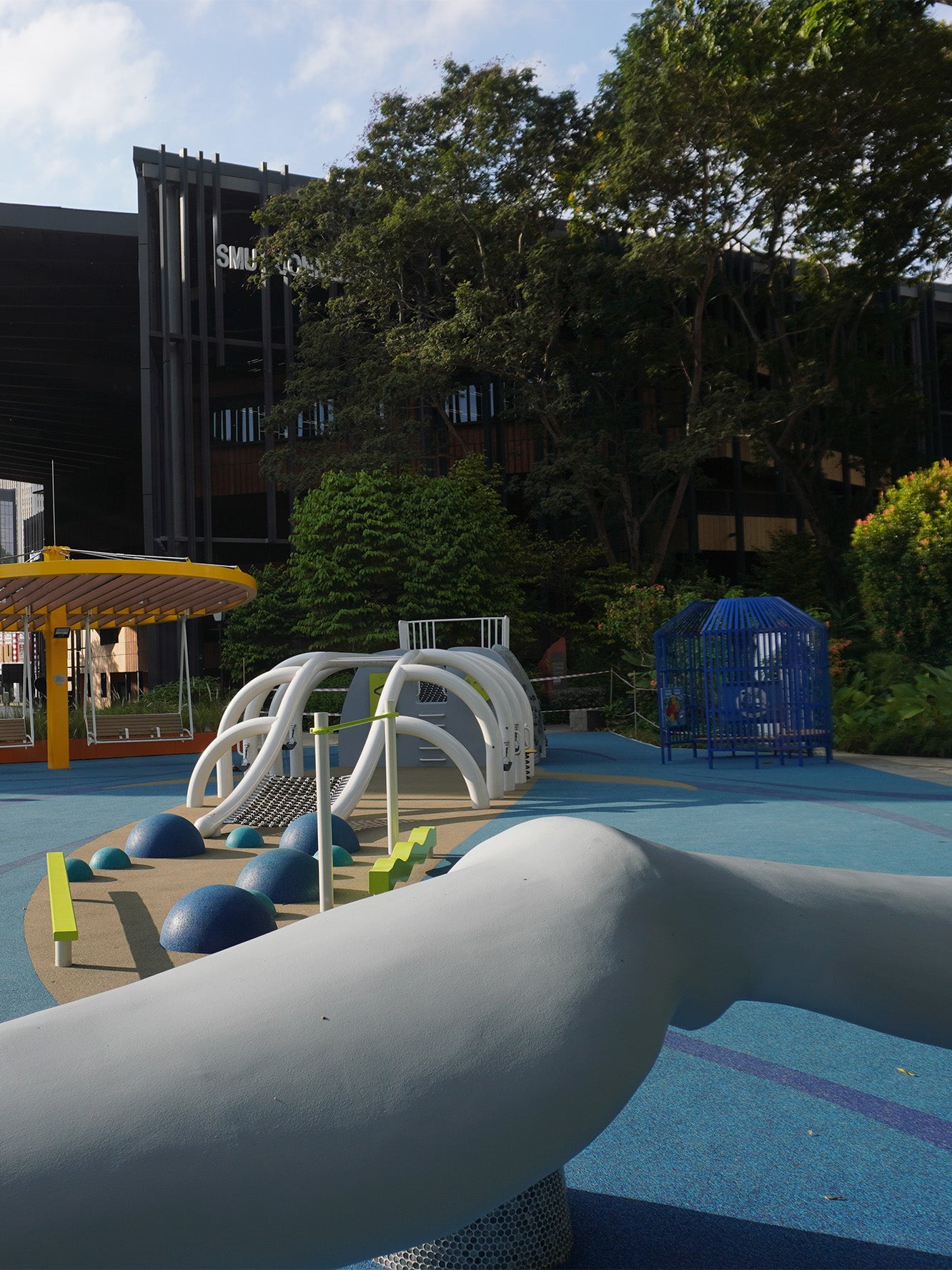
Tail
Leading the tail, the design opens up into a series of balance beams and playmounds, spaces meant to cultivate risk-managed physical challenges and imaginative use.

Galopin
Galopin Play Panels engage children in interactive play, helping them develop hand-eye coordination and fine motor skills. Designed for fun and learning, these panels encourage exploration, creativity, and movement while fostering social interaction in an inclusive, safe, and stimulating play environment.
Outerspace
Outdoor picnic set furniture by Urbantime, supplied by Outerspace, completes the experience, offering seating and viewing points for carers and visitors, and encouraging lingering, conversation and community use.
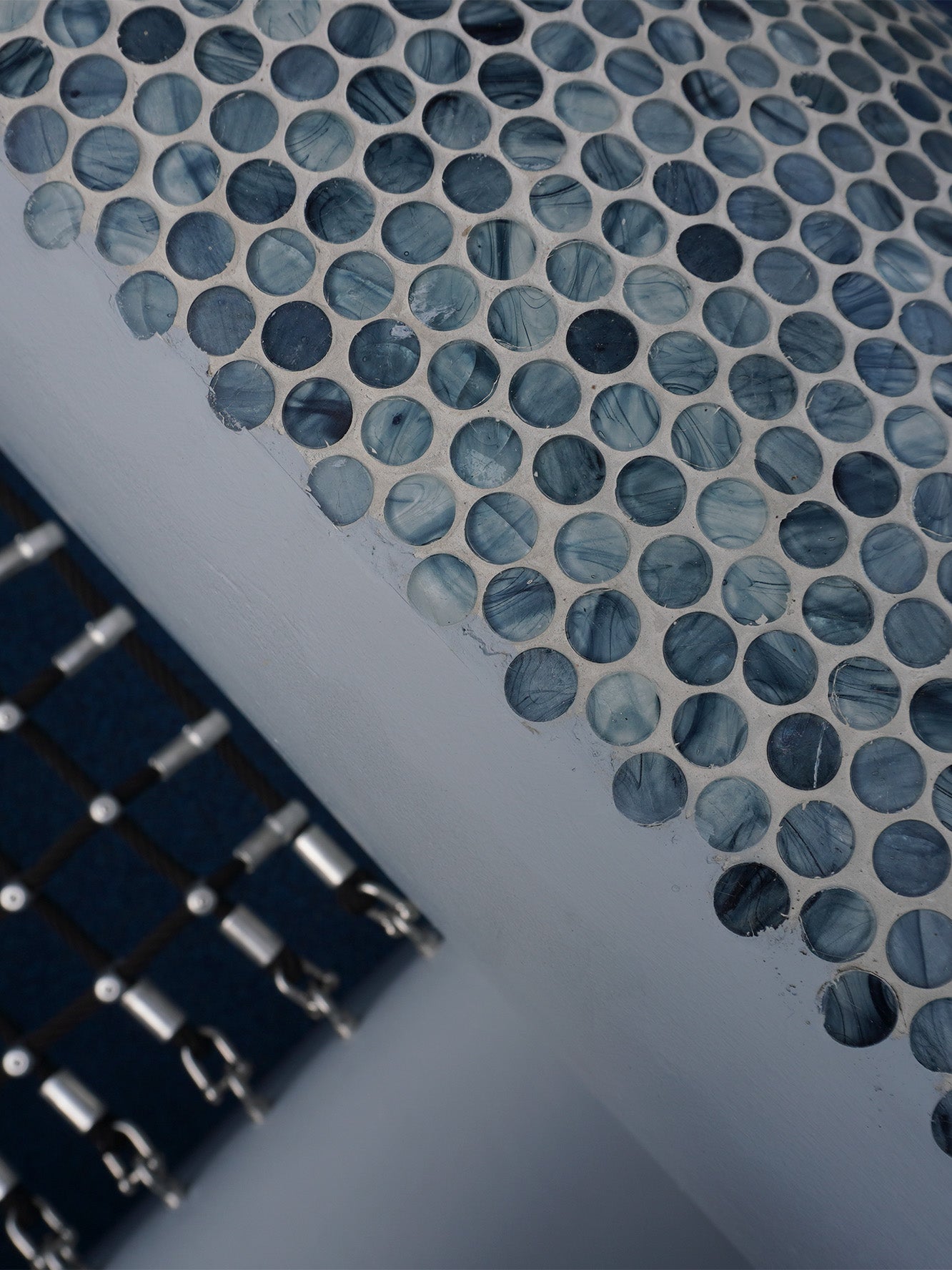

Designing a piece that resonates with museum visitors meant thinking carefully about accessibility and maintenance. GFRC was chosen because it achieves a fine surface finish while being resilient to weather and abrasion. Mosaic tile detailing is set and grouted to withstand heavy use.
The Magical Bridge Design process included repeated safety reviews and play testing during development. Each climbing sequence and fall-zone was analysed, surfacing options were tested, and sightlines for supervision were prioritised. The result is a structure that feels adventurous without exposing children to unmanaged risks—an environment where curiosity is encouraged but safety engineering is never compromised.

A Whale of a Tale is a layered learning environment. The installation develops coordination, balance and strength through climbing, swinging and negotiating various ground surfaces. Sensory and cognitive learning is supported through musical instruments, rotational motion and open-ended playmounds that invite construction of imaginary narratives. The whale’s interior and exterior spaces foster cooperative play—children can scale the cargo net and coordinate at the Berliner Disk. Intergenerational equipment by Interplay invites cross-generational interaction and models lifelong movement habits.
Furthermore, the connection to the National Museum gives the play experience an extra cultural layer. Children play inside a sculptural echo of a museum specimen, bridging embodied learning with curiosity about history and natural science. For families, the site becomes a place to tell stories about the whale's history, which enriches civic literacy through lived experience.
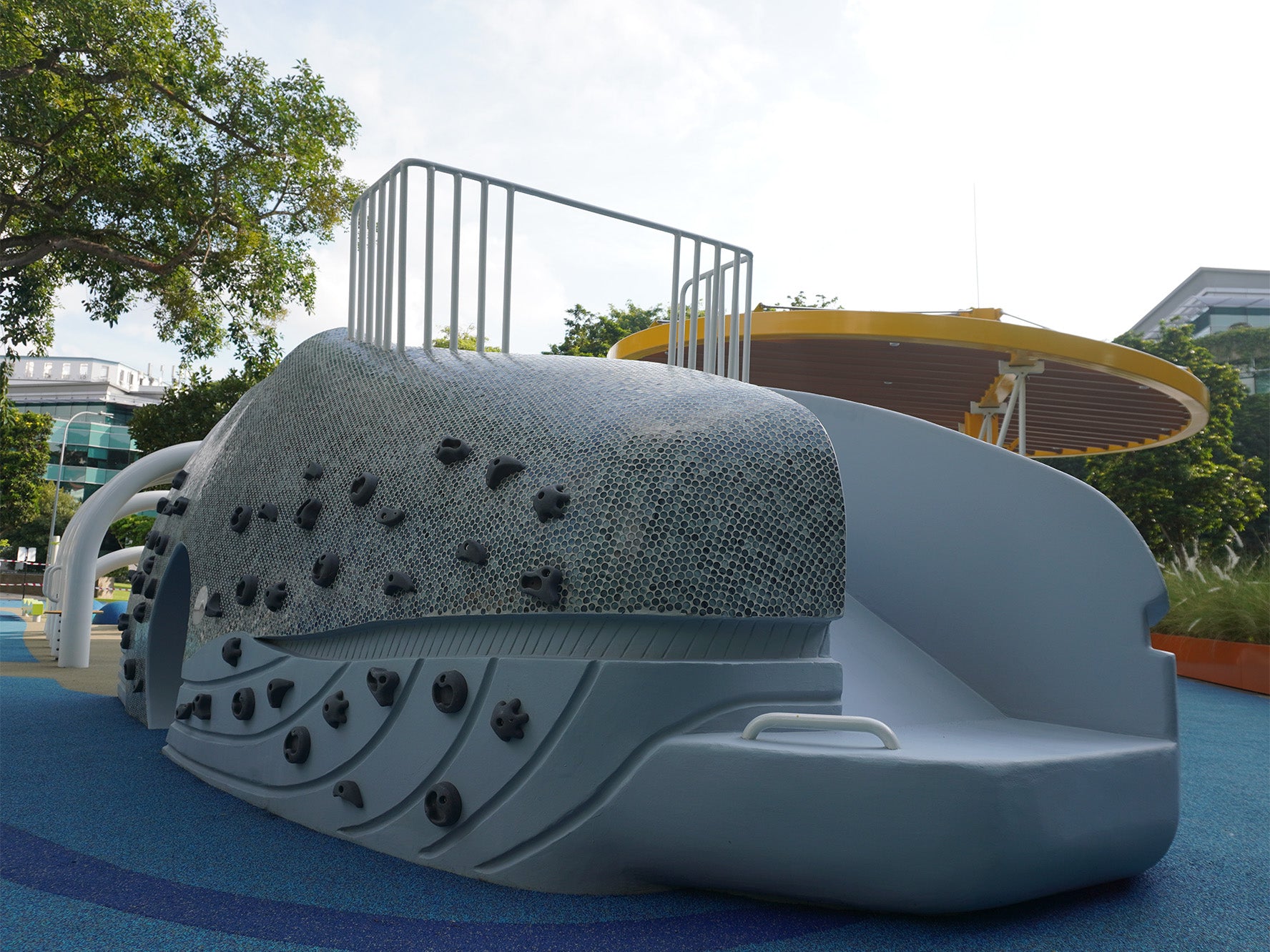
This playground is designed as a multi-sensory environment that nurtures children’s overall development. Physical challenges build gross motor skills and coordination, while musical components cultivate auditory discrimination and rhythm awareness. Balance and vestibular elements strengthen spatial orientation and self-regulation, and the evocative whale form inspires narrative play and cultural curiosity. Together, these elements create a robust environment for cognitive, social, and motor growth across diverse age groups.
The thoughtful mix of free-play and guided features makes the space ideal for informal visits, school programmes, and community events, enhancing the museum grounds’ role as a civic asset. With seating and fitness equipment incorporated, the playground also serves as a social hub for caregivers, the elderly, and community groups. As a trusted playground supplier in Singapore, we ensure that every creation is beautiful, durable, safe, educational, and inclusive—inviting children to explore, learn, and grow through play.
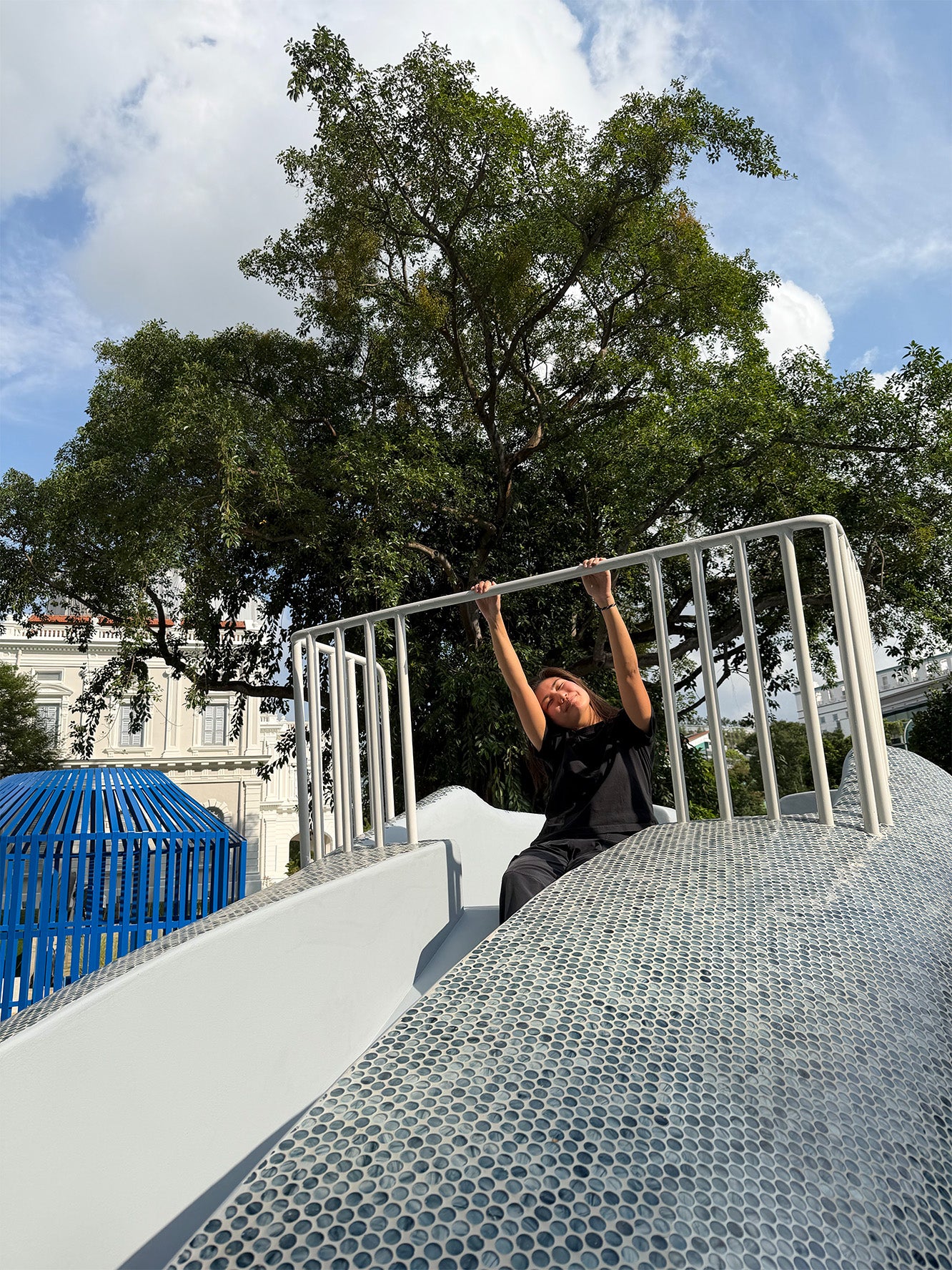
This project holds a special place in my heart as it marks my very first playground completed since joining the family business. The whale playground was a customised creation, and with its safety compliance under our care, we had to ensure that every curve, dimension, and play element met the safety standards, all while keeping the design buildable and true to its playful spirit.
It was an incredible journey of learning — from managing project details and costs to upholding quality and safety at every step. There were many moments of challenge and discovery, but each one made this experience deeply rewarding.
I’m filled with gratitude for everyone who made this possible: Jia Lin and Yani from the National Museum of Singapore, The Magical Bridge Foundation, Scott Ang from Steckler Holdings, Mark and Matthias from RSP, Augustus, Wee Keat, Uncle Vincent, Kimberly and William from SPACELogic Pte Ltd — thank you for trusting me and allowing me to grow into the best playground supplier I can be.
And to Patrick, Sam, and my CT-Art team — thank you for your guidance, patience, and for showing me what it truly means to build a playground that brings joy to others.
Share:
Mandai Rainforest Resort: Nature-Inspired Playground
Sea Shell Park: Build A Playground